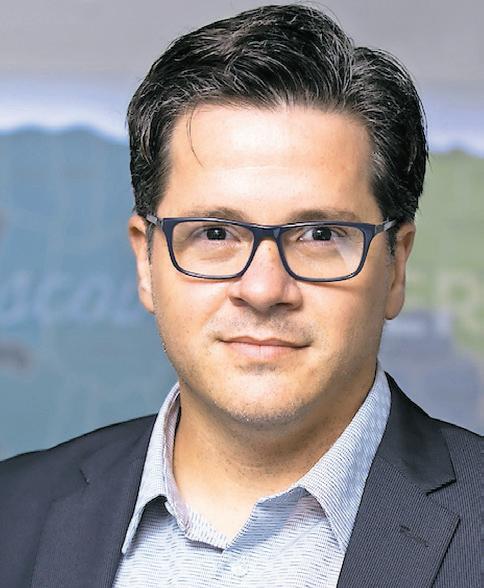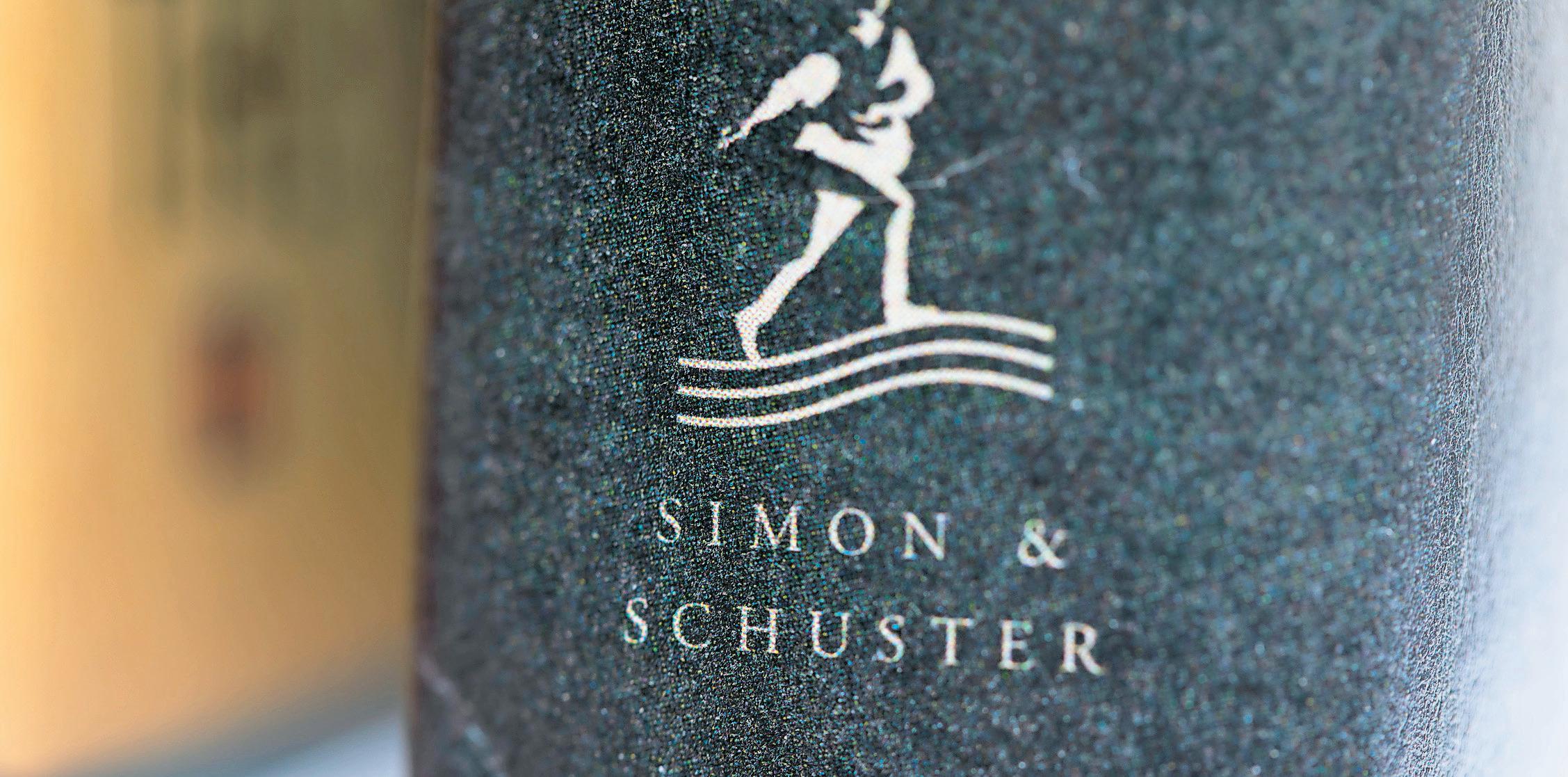
20 minute read
some hoPe for Pr’s coffee Industry
This images where taken in a plantation in one of Puerto Rico’s most prominent coffee cultivation sector, the town of Adjuntas.

Advertisement
Coffee industry in critical condition, but there is hope
Improvements have been made and the next harvest could the best in the last five years
Juan A. Hernández, The Weekly Journal
Almost five years since the devastation of Hurricane María the status of the coffee industry in Puerto Rico is still critical. Coffee production on the island has not been able to increase to the same levels as before the storm. Nevertheless, improvements have been made and there are reasons to be optimistic as the next harvest “should be one of the best in the last five years.” According to coffee growers, brokers and dealers, the problem affecting the industry the most is the lack of people to harvest the berry, particularly in the island’s mountainous region. Local coffee growers have had to bring coffee pickers from other countries, even though it is very costly, in order not to lose their crops. “It is a costly endeavor because you have to comply with federal regulations, among other requirements, and provide the space these workers would be needing. Nevertheless, several coffee growers are already doing it,” said Omar Torres, founder of Gustos Coffee Co. The Coffee entrepreneur pointed out the impact this solution has had on the retail price of the coffee. “As the price of 100% Puerto Rican coffee increases, it becomes so expensive to buy local coffee that not everybody can afford to by 100% Puerto Rican specialty coffee.” Torres also pointed the final price of coffee is further affected by the increasing prices of fertilizers, gas, electricity, and transportation, among other production costs. Aside from the most evident atmospheric threats that coffee growers, and farmers in general, must face there are also biological threats: pests.
Other threats
In the case of the coffee industry, the coffee berry borer (broca, in Spanish) is the most serious pest in many of the major coffee-producing countries in the world. But, according to Torres, broca has been greatly controlled thanks to “different prevention measures taken.” Still, there is a risk that the pernicious pest could surge. “Broca tends propagate faster when the coffee berry drops to the ground because there are no pickers to harvest it,” said Torres. “That is a problem that may very well happen if we are not able to harvest this year’s crop.” Regarding other pests that could affect the harvest, Torres considers they are under control with the measures suggested by the Puerto Rico Department of Agriculture. But even before Hurricane María, coffee production in Puerto Rico was not enough to supply local demand. So, the government imports coffee. This means that only a small percentage of the coffee grown in Puerto Rico is destined for exportation. According to Torres, less than five percent of the yearly harvest is exported as premium coffee. Torres considers there is a big difference, in terms of quality, between the 100% Puerto Rican coffee and the commercial coffee the government imports to cover local demand. But admitted “it is difficult for a person who doesn’t understand the difference between 100% Puerto Rican coffee and regular commercial coffee” to understand the huge price difference. “The best moment for Puerto Rico, in terms of [coffee] exportation was in the 1890s, when we were the fourth exporter [in the world]. That was the Golden Era of Puerto Rican coffee. If I’m not mistaken, back then some 600,000 quintals were exported every year. Nowadays, we only produce 20,000 quintals. And that is considering all types of coffee –specialty, premium, regular and robusta– ,” said Torres. A quintal (hundredweight) weighs 100 pounds.
Specialty coffee
Coffee grading starts with the “specialty coffee,” which must meet specific requirements set by the specialty coffee associations of the world. They basically require that for every 300 grams of coffee there could only be up to five minor defects on the beans. Also, tasters’ points for this coffee must be above 80. Torres argued that the harvesting of specialty coffee helps coffee growers improve their business by making it profitable and sustainable, which in turn will guarantee they could use the proper harvest and production techniques. “The alternative for the future of coffee growing in Puerto Rico is to continue promoting specialty coffee because that would allow us to continue exporting. This would require continued training to the coffee growers, so they use the proper techniques,” said Torres, who emphasized Gustos Coffee specializes in that type of coffee.
Inflation and wage data suggest US prices will keep climbing
Christopher Rugaber – The Associated Press
WASHINGTON (AP) – Inflation surged in June and workers’ average wages accelerated in the spring – signs that Americans won’t likely feel any relief from rising prices anytime soon and that the Federal Reserve will feel compelled to further raise borrowing costs. An inflation gauge closely tracked by the Fed jumped 6.8% in June from a year ago, the government said Friday, the biggest such jump in four decades. Much of the increase was driven by energy and food. On a month-to-month basis, too, prices surged 1% in June, the biggest such rise since 2005. Even excluding the volatile food and energy categories, prices climbed 0.6% from May to June. Employees’ wages, excluding government workers, jumped 1.6% in the April-June quarter, matching a record high reached last fall. Higher wages tend to fuel inflation if companies pass their higher labor costs on to their customers, as they often do. Friday’s figures underscored the persistence of the inflation that is eroding Americans’ purchasing power, dimming their confidence in the economy and threatening Democrats in Congress in the run-up to the November midterm elections. Some signs indicate that certain categories of inflation may moderate in the coming months, though not by very much: Gas prices have fallen since mid-June from an average national peak of $5 to $4.26, according to AAA. Likewise, other commodity prices, for items such as wheat and copper, have plunged. But more persistent drivers of inflation show little, if any, evidence of slowing. The wage data released Friday – a measure known as the employment cost index – indicated that paychecks were still growing at a robust pace. That’s good for workers, but it could raise concerns at the Fed about its effect on prices. Chair Jerome Powell specifically cited this measure during a news conference Wednesday as a source of concern for the central bank’s policymakers. “This is a (report) that’s going to keep Fed officials up at night,” said Omair Sharif, founder and president of Inflation Insights. The government also reported Friday that consumer spending managed to just outpace inflation last month, rising 0.1% from May to June. Spending actually jumped, but most of the gain was wiped out by higher prices. Rising consumer demand for services, such as airline tickets, hotel rooms and restaurant meals, is still helping fuel inflation. Many retail and consumer goods chains, though, say inflation is squeezing shoppers and limiting how far their money goes – a sign that consumer spending could further weaken. This week, Walmart said its profits would fall because its customers are spending more on pricier food and gas, leaving them less able to buy clothes and other discretionary items. Likewise, Best Buy downgraded its sales and profit forecasts because surging inflation has forced consumers to reduce their purchases of electronics appliances. Inflation has been rising so fast that despite
In fact, the pay raises many workers have received, most consumers are falling behind the rising cost-ofliving. Rising consumer demand for services, such as airline tickets, hotel rooms and restaurant meals, is still helping fuel inflation. High inflation and interest rates are also hampering the U.S. economy, which shrank in the April-June quarter for a second straight quarter, intensifying fears that a recession is looming. Two quarters of declining growth meet an informal rule of thumb for when a recession begins, although robust hiring suggests that the economy still maintains pockets of strength and isn’t yet in a downturn. On Wednesday, the Fed raised its benchmark interest rate by three-quarters of a point for a second straight time in its most aggressive drive in more than three decades to tame high inflation. Powell signaled that the Fed could raise rates by smaller increments in the coming months. By raising borrowing rates, the Fed makes it costlier to take out a mortgage or an auto or business loan. The goal is for consumers and businesses to borrow, spend and hire less, thereby cooling the economy and slowing inflation.
An inflation gauge closely watched by the Fed rose 6.8% in June from a year earlier, the government said on Friday. >AP Photo/ Andres Kudacki
Omair Sharif, president of Inflation Insights.

Ricardo Álvarez-Díaz
Licensed architect and entrepreneur. www.advfirm.com
The importance of focusing on office culture
As many companies struggle to convince employees to return to their physical offices, the attention on office culture is as important as ever. Office culture is basically the character and personality of your organization. It is the sum of its unique values, interactions, behaviors, and attitudes. While many businesses let their workplace culture emerge organically, a great office culture stems from exceptional management, workplace practices, policies, people, and of course, office design. A great office culture places a high priority on spaces that promote employee health and wellbeing. Offices that incorporate biophilic design elements and have designated relaxation areas, greatly improve working conditions for their team by combating cognitive fatigue, lowering stress levels, and enhancing overall health.
A stressful work environment is detrimental to our health and wellbeing. That’s why companies need to provide health insurance benefits, a fitness stipend, and mental health resources to encourage their team to stay healthy and motivated. If employees are feeling healthy and well, they will produce good work. Enhanced productivity and improved job performance are some of the other benefits that a great office culture brings to workers.
Providing open and flexible spaces, standing desks, and meeting rooms, are part of the design options that help teams collaborate and work easily. A comfortable workplace is key to enhancing employee productivity. The right office culture encourages workers to expand their personal and professional skills and knowledge for their own benefit and that of the team and the company. Companies that create initiatives and opportunities for lifelong learning to help each employee achieve their goals and dreams are more likely to be successful.
Companies can implement regular goal-setting meetings, industry lunch and learns, resources, coaching and mentoring opportunities as well as an annual budget to be used for professional development. This helps employees continue to grow both personally and professionally to reach their maximum potential. Work-life balance is another important consideration of a great office culture. Companies that support their employees by
In fact, allowing flexible work hours, extra paid vacation days, Office and personal time culture is basically off encourage their the character and team to maintain a personality of your successful work-life organization. It is the balance. By focusing sum of its unique on outcomes rather values, interactions, than inputs you can behaviors, and reinforce a culture attitudes. of accountability and teamwork. The onboarding process is key to preventing employee turnover, which costs companies large amounts of time and money every year. Once a new hire is acclimated and engaged with the company, they are more likely to stick around. A study by Glassdoor found that companies with an effective onboarding process improved their new hires’ engagement rate by 82%. A positive office culture should promote and encourage activities and initiatives that foster teamwork. Retreats, happy hours, team yoga, and community service opportunities “Companies that create initiatives and opportunities for lifelong learning to help each employee achieve their goals and dreams are more likely to be successful.”
Ricardo Álvarez, architect
are just some of the ways that companies help their teams form stronger connections with each other. Team building exercises help us understand each other more, empathize with one another and deepen our bond as a team. A great office culture plays a key role in your team and company’s success. It provides the best possible working environment to support and invest in your people. With a supportive office culture and the right motivation, your employees and business will continue to grow, scale, and succeed.


Ricardo A. Cortés Chico
When 2022 began, the scenario for the tourism industry was encouraging and confusing at the same time. We had just finished one of the best years in Puerto Rican tourism, with lodging income levels rising like never before and the industry employment with the highest figures in Puerto Rico’s history. However, the Omicron variant stalked us with a wave of infections that dwarfed previous variants of COVID-19, that fastidious virus that has changed our world since 2020.
Half a year has passed since those days, and looking back, we can argue that what we lived those days was only a relatively minor setback. In just a few weeks after the peak of infections, visitors returned, our attractions started to receive tourists as before, and our industry was back on the growth track. The despairing cries coming from those marble alliances that seem to oppose the great work done to restore visitation did not matter. Puerto Rican tourism industry already knows the road to recovery, and it embarked on it as it has done many times.
This last return was more robust than on previous occasions. Recently, Discover Puerto Rico commissioned a study to Tourism Economics to get a sense of the recovery we are witnessing, and the results were very encouraging. Preliminary data indicate that in 2021 non-resident visitors spent $4,582 million in Puerto Rico. This figure was the highest reported for the Puerto Rican market. The most conservative estimates place visitor spending in 2022 at $5,563 million. This is a minimum increase of 21%, according to Tourism Economics. Rarely do we see such growth in an industry. The most aggressive projection anticipates an expansion of 38%. This version presumes a full reactivation of the cruise ship industry and the strengthening of air capacity, among other factors, which we will not necessarily be able to achieve given the current inflation and high fuel prices.
We still have a long way to go. The cruise ship industry is building confidence again with passengers; some areas are not receiving the benefits of tourism they saw before the pandemic changed our lives. Also, we still don’t know if the industry can maintain the high demand-driven rates we have seen since 2021. Some even believed that the boom of the tourism industry was entirely the result of U.S. travelers opting out of international destinations and preferring places considered domestic, like Puerto Rico. Still, our destination was leading the recovery, when compared to other U.S. destinations considered domestic by U.S. travelers. We don’t want to be too optimistic, but our industry data points toward a shift in spending and visitation in Puerto Rico.
The good news is that we have much space to grow. Tourism concentrated for too long on the metro and eastern regions of Puerto Rico. New travel trends push visitation to all areas; travelers are more conscientious about social and environmental issues and look for cultural experiences that enrich their lives. With its unique position, culturally, and environmentally, Puerto Rico is in a unique place to expand and lead this new era of travel.
The encouragement

Ricardo Cortés Chico, Director of Public Affairs at Discover Puerto Rico

The government and publishing titan Penguin Random House are set to exchange opening salvos in a federal antitrust trial Monday as the U.S. seeks to block the biggest U.S. book publisher from absorbing rival Simon & Schuster. >AP Photo/Jenny Kane US begins court battle against publishing giants’ merger
DoJ is trying to block the $2.2 billion merger between Penguin Random and Simon & Schuster
Marcy Gordon and Hillel Italie –The Associated Press
WASHINGTON (AP) – The government and publishing titan Penguin Random House exchanged opening salvos in a federal antitrust trial Monday as the U.S. seeks to block the biggest U.S. book publisher from absorbing rival Simon & Schuster. The case comes as a key test of the Biden administration’s antitrust policy.
The Justice Department has sued to block the $2.2 billion merger, which would reduce the Big Five U.S. publishers to four.
At Monday’s opening session, opposing attorneys for the two sides presented their cases before U.S. District Judge Florence Pan.
Justice Department attorneys called the merger “presumptively wrong” because it would shrink competition and, inevitably, the vital public discourse that books help engender. Penguin Random House countered that the new company would “enhance” competition because the combined company could turn out books more efficiently.
The government contends that it would hurt authors and, ultimately, readers if German media titan Bertelsmann, of which Penguin Random House is a division, is allowed to buy Simon & Schuster, the fourth-largest publisher, from U.S. media and entertainment company Paramount Global. It says the deal would thwart competition and give Penguin Random House gigantic influence over which books are published in the U.S., likely reducing how much authors are paid and giving consumers fewer books to choose from.
The publishers counter that the merger would strengthen competition among publishers to find and sell the hottest books, by enabling the combined company to offer bigger advance payments and marketing support to authors. It would benefit readers, booksellers and authors, they say.
The two New York-based publishers have impressive stables of blockbuster authors, who’ve sold multiple millions of copies and have scored multimillion-dollar deals. Within Penguin Random House’s constellation are Barack and Michelle Obama, whose package deal for their memoirs totaled an estimated $65 million, Bill Clinton, who received $15 million for his memoir, Toni Morrison, John Grisham and Dan Brown. Simon & Schuster counts Hillary Clinton, who received $8 million for her memoir, Bob Woodward and Walter Isaacson. Bruce Springsteen splits the difference: His “Renegades: Born in the USA,” with Barack Obama, was published by Penguin Random House; his memoir, by Simon & Schuster. The Justice Department contends that as things now stand, No. 1 Penguin Random House and No. 4 Simon & Schuster, by total sales, compete fiercely to acquire the rights to publish the anticipated hottest-selling books. If they are allowed to merge, the combined company would control nearly 50% of the market for those books, it says, hurting competition by reducing advances paid to authors and diminishing output, creativity and diversity. The government’s star witness, bestselling author Stephen King, testified on Tuesday’s session of the weeks long trial in U.S. District Court in Washington, D.C. King’s works are published by Simon & Schuster.
In fact, The Big Five — the other three are Hachette, HarperCollins and Macmillan — dominate U.S. publishing. They make up 90% of the market for The two anticipated top-selling books, the government New York-based says. publishers have The Biden administration is staking out new impressive stables ground on business concentration, and the of blockbuster government’s case against the publishers’ merger authors, who’ve sold is an important test. multiple millions President Joe Biden has made competition a of copies and have pillar of his economic policy, denouncing what scored multimillion he calls the outsized market power of an array of dollar deals. industries and stressing the importance of robust competition to the economy, workers, consumers and small businesses. Biden, a Democrat, has called on federal regulators, notably the Justice Department and the Federal Trade Commission, to give greater scrutiny to big business combinations.
U.S. Dept. of Justice
Is Danish king who gave name to Bluetooth buried in Poland?
Chronicles from the Middle Ages say the Viking king was buried in Roskilde, in Denmark, in the late 10th century.
Monika Scislowska - The Associated Press
WIEJKOWO, Poland (AP) — More than 1,000 years after his death in what is now Poland, a European king whose nickname lives on through wireless technology is at the center of an archaeological dispute. Chronicles from the Middle Ages say King Harald “Bluetooth” Gormsson of Denmark acquired his nickname courtesy of a tooth, probably dead, that looked bluish. One chronicle from the time also says the Viking king was buried in Roskilde, in Denmark, in the late 10th century. But a Swedish archaeologist and a Polish researcher recently claimed in separate publications that they have pinpointed his most probable burial site in the village of Wiejkowo, in an area of northwestern Poland that had ties to the Vikings in Harald’s times. Marek Kryda, author of the book “Viking Poland,” told The Associated Press that a “pagan mound” which he claims he has located beneath Wiejkowo’s 19thcentury Roman Catholic Church probably holds the king’s remains. Kryda said geological satellite images available on a Polish government portal revealed a rotund shape that looked like a Viking burial mound. But Swedish archaeologist Sven Rosborn, says Kryda is wrong because Harald, who converted from paganism to Christianity and founded churches in the area, must have received an appropriate grave somewhere in the churchyard. Wiejkowo’s Church of The Immaculate Conception of the Blessed Virgin Mary stands atop a small round knoll. Historians at the Danish National Museum
The 10th century golden Curmsun disc with the name of Danish King Harald “Bluetooth“ Gormsson (Curmsun in Latin) on it, coming from a tomb at the Roman Catholic church in Wiejkowo, Poland. >Sven Rosborn via AP in Copenhagen say they are familiar with the “suggestion” that Wiejkowo is Harald’s burial place. Rosborn detailed his research in the 2021 book “The Viking King’s Golden Treasure” and Kryda challenged some of the Swede’s findings in his own book published this year.
In fact, Harald, who died in 985, probably in Jomsborg — which is believed to be the Polish town of Swedish Wolin now — was one of the last telecommunications Viking kings to rule over what is company Ericsson now Denmark, northern Germany, named its Bluetooth and parts of Sweden and Norway. wireless link He spread Christianity in his technology after the kingdom. king, reflecting how Swedish telecommunications he united much of company Ericsson named its Scandinavia during Bluetooth wireless link technology his lifetime. after the king, reflecting how he united much of Scandinavia during his lifetime. The logo for the technology is designed from the Scandinavian runic letters for the king’s initials, HB. Rosborn, the former director of Sweden’s Malmo City Museum, was spurred on his quest in 2014 when an 11-year-old girl sought his opinion about a small, soiled coin-like object with old-looking text that had been in her family’s possession for decades. Experts have determined that the cast gold disc that sparked Maja Sielski’s curiosity dated from the 10th century. The Latin inscription on what is now known as the “Curmsun disc” says: “Harald Gormsson (Curmsun in Latin) king of Danes, Scania, Jomsborg, town Aldinburg.” Sielski’s family, who moved to Sweden from Poland in 1986, said the disc came from a trove found in 1841 in a tomb underneath the Wiejkowo church, which replaced a medieval chapel. The Sielski family came into the possession of the disc, along with the Wiejkowo parish archives that contained medieval parchment chronicles in Latin, in 1945 as the former German area was becoming part of Poland as a result of World War II. A family member who knew Latin understood the value of the chronicles — which dated as far back as the 10th century — and translated some of them into Polish. They mention Harald, another fact linking the Wiejkowo church to him. The nearby Baltic Sea island and town of Wolin cultivates the region’s Viking history: it has a runic stone in honor of Harald Bluetooth and holds annual festivals of Slavs and Vikings. Kryda says the Curmsun disc is “phenomenal” with its meaningful inscription and insists that it would be worth it to examine Wiejkowo as Harald’s burial place, but there are no current plans for any excavations.





